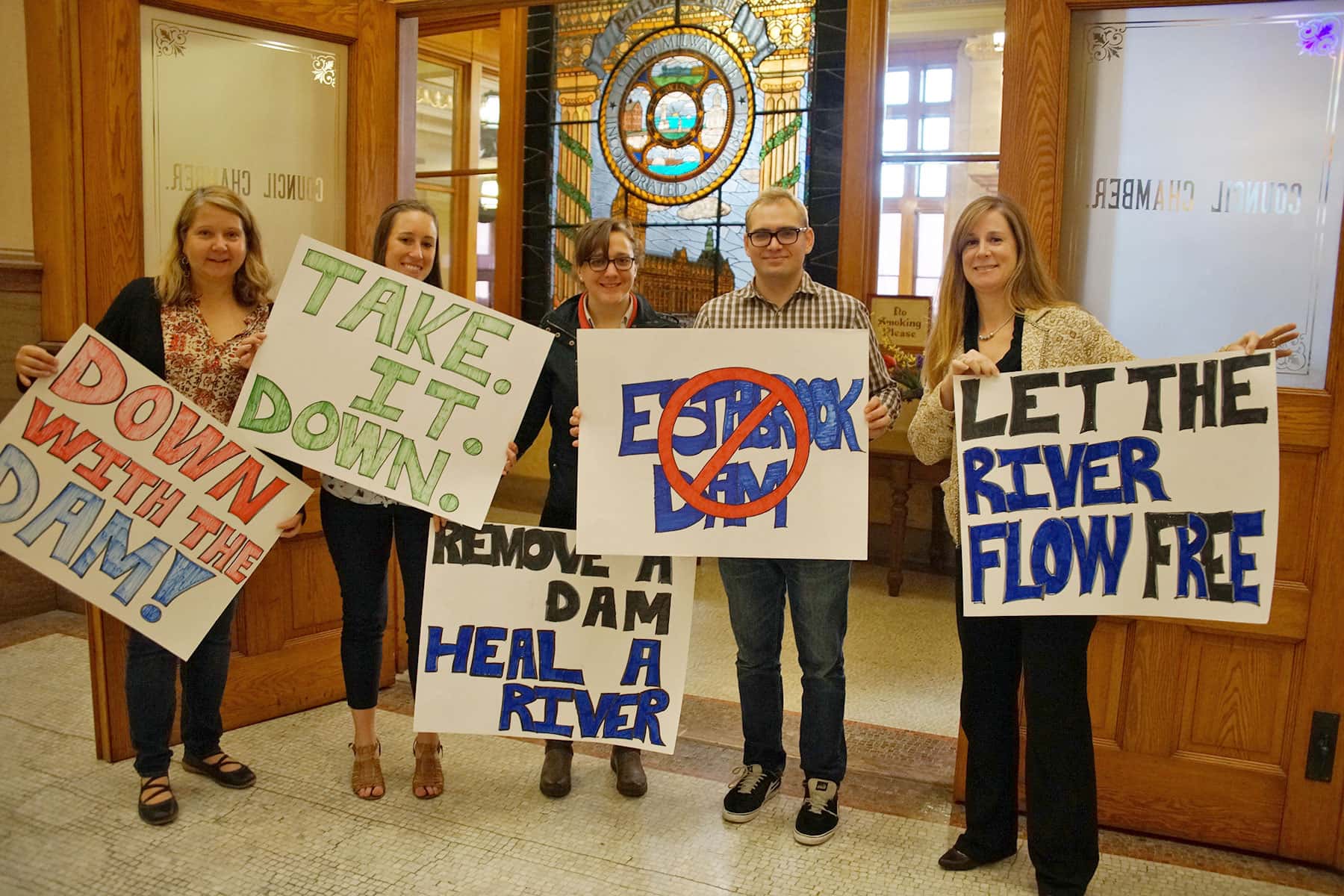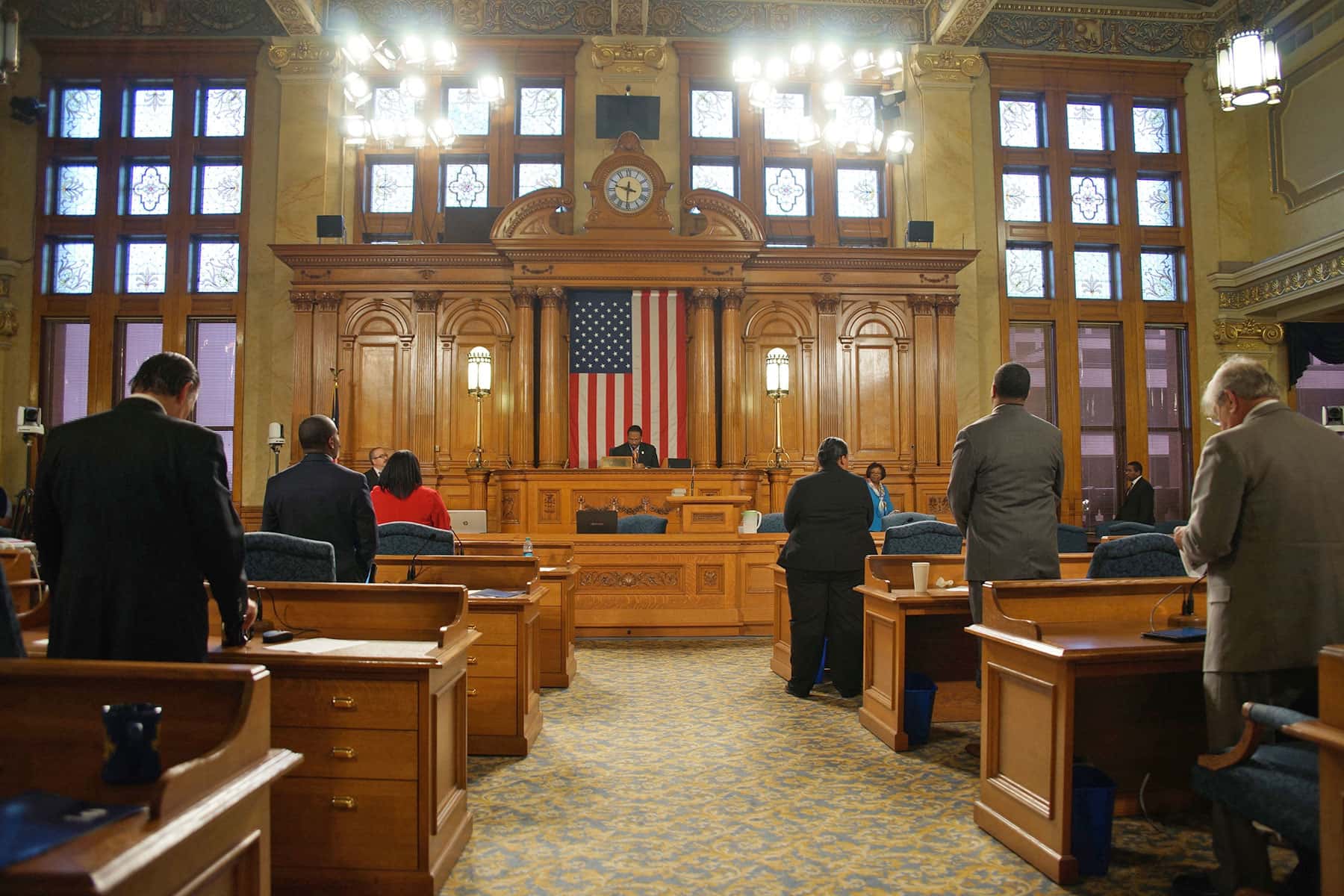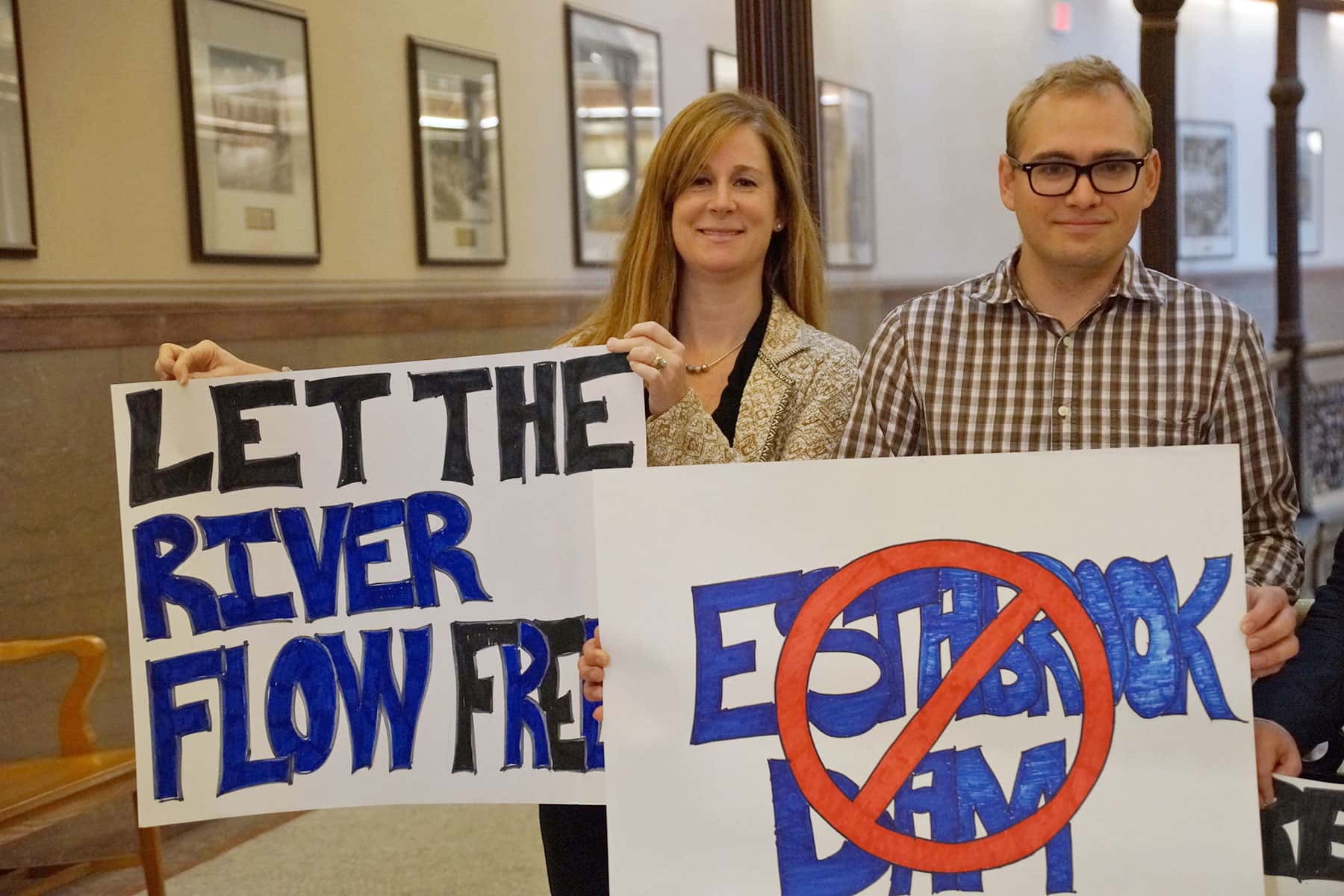
The vote was an important step in the effort to ultimately remove the Estabrook Dam. The move comes during a contentious debate over what is best for the Milwaukee River and City of Milwaukee residents.
“For years, the community has spoken overwhelmingly in support of removing the Estabrook Dam and finally their voices have been heard, and their interests will be represented,” said County Executive Chris Abele. “I also look forward to investing the tax dollars that would have been spent preserving an artificial dam that only benefits a few property owners upstream into parks that everyone can enjoy.”
Since the North Avenue Dam was removed more than a decade ago, property values gone up and flood risk has gone down. Prior to the dam removal there were only 6 species of fish in that part of the river, and there are 36 today. Studies project the same kind of economic and environmental revival surrounding the removal of the Estabrook Dam in the coming years. Instead of putting millions of dollars into repairing the Dam, investments are planned for several Milwaukee County parks.
The Common Council vote came after a collaborative effort between the City of Milwaukee, Milwaukee County, and the Milwaukee Metropolitan Sewerage District (MMSD). The plan was introduced last month by Mayor Tom Barrett, County Executive Chris Abele, Milwaukee Aldermen Nik Kovac and Jim Bohl, and MMSD to temporarily rezone the land surrounding the Estabrook Dam so that the structure could be removed by MMSD. Alderman Russell Stamper II was instrumental in passing the proposal through the zoning committee after weighing extensive public input and support for the rezoning.
Before the removal proposal moved forward, extensive community engagement efforts were taken to get public feedback. Some of the documented statements from residents included:
“Please, please take down the Lincoln Park/Glendale dam on the Milwaukee River. When the North Avenue dam was removed, the flow of water improved on the river and the wildlife reappeared in a short time.”
“Since moving to our Glendale home in 2010 we have worked hard to help people inside and outside of our immediate community understand the many benefits of removing the Estabrook Dam, and today it felt like our voices were supported.”
“I suggest not spending money on Estabrook Dam project, it’s a waste of money. If so called home owners want to change this let them pay for it themselves instead of it affecting the system for many more people, and the way it was passed by the County Board stinks to high heaven.”
“I came here because I’m really irritated with the whole Estabrook dam situation. Political moves have been made – it is fiscally ridiculous and irresponsible. I live on the river and my neighbors and I want the dam gone. I appreciate Abele’s standing strong against repairing it.”
“I’ve been watching the Estabrook Dam controversy carefully. Keeping the dam will only benefit a few, but many more will suffer. More than the decisions themselves, I’m concerned with how decisions are made.”
“I’m a property owner on the part of the river impacted by the dam. It doesn’t prevent flooding, but rather increases it. Per the floodplain manager, some properties will be removed. The dam benefits the small group of people who use the area for motor boating. They haven’t been able to since around 2009 when the gates were ordered open. My house flooded prior to that, 18 because the gates were not opened quickly enough. Recently, since the opening of the dam, there was a higher water event, and my house did not flood. There are four lawsuits pending, and with one, I would be assessed for dam upkeep. The dam should be removed to save county money.”
The nonprofit organization Milwaukee Riverkeeper was supportive of the Common Council’s decision, which will eventually achieve a swimmable, fishable Milwaukee River.
“Removing the Estabrook Dam is a generational opportunity. This decision will ultimately underlie the legacy we choose to leave our children and our grandchildren,” said Jennifer Bolger Breceda, Executive Director of Milwaukee Riverkeeper in a prepared statement. “Removal of the dam is the only resolution that fits within the goals and missions all of the environmental, wildlife and fishing groups who have been working to restore and protect our watersheds over the years. It also makes all the sense in the world for the Floodplain Manager to control a nuisance condition in the river that impacts flooding. It’s past the time for this dilapidated, 80-year old structure to go and for the river to once again flow free.”
Removing the Estabrook Dam follows a national trend in removing aging infrastructure that poses a risk to public safety, and a local trend sustainably investing in the health and betterment of natural waterways. With Milwaukee claiming to be a freshwater capital of the world, developing sustainable improvements to the waterways and public health is a priority.
MMSD will be responsible for removing the Dam once it obtains the necessary DNR permits. MMSD voted last month to approve the plan, pending approval by the Common Council.
“Our award-winning Parks are a source of pride in Milwaukee County and I am committed to ensuring that they are constantly improving for the people who enjoy them. Removing the Estabrook Dam is another step forward in protecting our parks and making sustainable investments in the future,” said Abele.
Once the Dam rezoning is completed by the City of Milwaukee, it will be sold to MMSD for $1. The MOU between Milwaukee County (the seller) and MMSD (the buyer) will include the following provisions: Park land will remain in public custody, the Dam is sold under the condition that it will be removed by MMSD, the County will continue to operate and maintain the dam and the surrounding park land, and the County will continue to provide park programming for Estabrook Park.
Removal of the dam is expected to cost $1.7 million, much of which will be covered by grants. In contrast, repair of the Dam was estimated to cost at least $4.1 million, which does not include ongoing maintenance costs. Demolition is expected to begin in 2017.

















